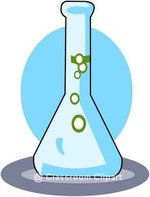Barium
|
|
| |||||||||||||||||||||||||||||||||||||||||||||||||||||||
| General | |||||||||||||||||||||||||||||||||||||||||||||||||||||||
|---|---|---|---|---|---|---|---|---|---|---|---|---|---|---|---|---|---|---|---|---|---|---|---|---|---|---|---|---|---|---|---|---|---|---|---|---|---|---|---|---|---|---|---|---|---|---|---|---|---|---|---|---|---|---|---|
| Name, Symbol, Number | Barium, Ba, 56 | ||||||||||||||||||||||||||||||||||||||||||||||||||||||
| Series | alkaline earth metals | ||||||||||||||||||||||||||||||||||||||||||||||||||||||
| Group, Period, Block | 2(IIA), 6, s | ||||||||||||||||||||||||||||||||||||||||||||||||||||||
| Density, Hardness | 3510 kg/m3, 1.25 | ||||||||||||||||||||||||||||||||||||||||||||||||||||||
| Appearance | silvery white
| ||||||||||||||||||||||||||||||||||||||||||||||||||||||
| Atomic Properties | |||||||||||||||||||||||||||||||||||||||||||||||||||||||
| Atomic weight | 137.327 amu | ||||||||||||||||||||||||||||||||||||||||||||||||||||||
| Atomic radius (Calc.) | 215 pm (253 pm) | ||||||||||||||||||||||||||||||||||||||||||||||||||||||
| Covalent radius | 198 pm | ||||||||||||||||||||||||||||||||||||||||||||||||||||||
| van der Waals radius | no information | ||||||||||||||||||||||||||||||||||||||||||||||||||||||
| Electron configuration | [Xe]6s2 | ||||||||||||||||||||||||||||||||||||||||||||||||||||||
| e- 's per energy level | 2, 8, 18, 18, 8, 2 | ||||||||||||||||||||||||||||||||||||||||||||||||||||||
| Oxidation states (Oxide) | 2 (strong base) | ||||||||||||||||||||||||||||||||||||||||||||||||||||||
| Crystal structure | Cubic body centered | ||||||||||||||||||||||||||||||||||||||||||||||||||||||
| Physical Properties | |||||||||||||||||||||||||||||||||||||||||||||||||||||||
| State of matter | solid (paramagnetic) | ||||||||||||||||||||||||||||||||||||||||||||||||||||||
| Melting point | 1000 K (727.2 ?C / 1341 ?F) | ||||||||||||||||||||||||||||||||||||||||||||||||||||||
| Boiling point | 2143 K (1870 ?C / 3398 ?F) | ||||||||||||||||||||||||||||||||||||||||||||||||||||||
| Molar volume | 38.16 ×10-6 m3/mol | ||||||||||||||||||||||||||||||||||||||||||||||||||||||
| Heat of vaporization | 142 kJ/mol | ||||||||||||||||||||||||||||||||||||||||||||||||||||||
| Heat of fusion | 7.75 kJ/mol | ||||||||||||||||||||||||||||||||||||||||||||||||||||||
| Vapor pressure | 98 Pa at 371 K | ||||||||||||||||||||||||||||||||||||||||||||||||||||||
| Speed of sound | 1620 m/s | ||||||||||||||||||||||||||||||||||||||||||||||||||||||
| Miscellaneous | |||||||||||||||||||||||||||||||||||||||||||||||||||||||
| Electronegativity | 0.89(Pauling scale) | ||||||||||||||||||||||||||||||||||||||||||||||||||||||
| Specific heat capacity | 204 J/(kg*K) | ||||||||||||||||||||||||||||||||||||||||||||||||||||||
| Electrical conductivity | 3 106/m ohm | ||||||||||||||||||||||||||||||||||||||||||||||||||||||
| Thermal conductivity | 18.4 W/(m*K) | ||||||||||||||||||||||||||||||||||||||||||||||||||||||
| 1st ionization potential | 502.9 kJ/mol | ||||||||||||||||||||||||||||||||||||||||||||||||||||||
| 2nd ionization potential | 965.2 kJ/mol | ||||||||||||||||||||||||||||||||||||||||||||||||||||||
| 3rd ionization potential | 3600 kJ/mol | ||||||||||||||||||||||||||||||||||||||||||||||||||||||
| Most Stable Isotopes | |||||||||||||||||||||||||||||||||||||||||||||||||||||||
| |||||||||||||||||||||||||||||||||||||||||||||||||||||||
| SI units & STP are used except where noted. | |||||||||||||||||||||||||||||||||||||||||||||||||||||||
Barium is a toxic chemical element in the periodic table that has the symbol Ba and atomic number 56. A soft silvery metallic element, barium is an alkaline earth metal and melts at a very high temperature. Its oxide is called baryta and it is primarily found in the mineral barite but is never found in its pure form due to its reactivity with air. Compounds of this metal are used in small quantities in paints and in glassmaking.
| Contents |
Notable characteristics
Barium is a metallic element that is chemically similar to calcium, yet is soft and in its pure form is silvery white resembling lead. This metal oxidizes very easily and when exposed to air and is highly reactive with water or alcohol. Barium is decomposed by water or alcohol. Some of the compounds of this element are remarkable for their high specific gravity, as is its sulfate: barite Ba(SO4) also called heavy spar.
Applications
Barium is primarily used in sparkplugs, vacuum tubes, fireworks, and in fluorescent lamps. Also:
- A "getter" in vacuum tubes.
- Barium sulfate is permanent white and is used in paint, in X-ray diagnostic work, and in glassmaking.
- Barite is used extensively as a weighing agent in oil well drilling fluids and in rubber production.
- Barium carbonate is a useful rat poison and can also be used in making glass and bricks, while barium nitrate and chlorate give green colors in fireworks.
- Impure barium sulfide phosphoresces after exposure to the light.
- Barium salts, especially barium sulfate, are sometimes given orally (a barium meal) or as an enema, to increase the contrast of medical X-rays of the digestive system.
- Lithopone, a pigment that contains barium sulfate and zinc sulfide, has good covering power, and does not darken in when exposed to sulfides.
History
Barium (Greek "barys" meaning "heavy") was first identified in 1774 by Carl Scheele and extracted in 1808 by Sir Humphry Davy in England. The oxide was at first called barote, by Guyton de Morveau, which was changed by Antoine Lavoisier to baryta, which soon was modified to "barium" to describe the metal.
Occurrence
Because barium quickly becomes oxidized in air, it is difficult to obtain this metal in its pure form. It is primarily found in and extracted from the mineral barite which is crystalized barium sulfate. Barium is commercially produced through the electrolysis of molten barium chloride (BaCl2)
Isolation (* follow):
Compounds
The most important compounds are barium peroxide, chloride, sulfate, carbonate, nitrate, and chlorate. When burned, barium salts glows green.
Isotopes
Naturally occurring barium is a mix of seven stable isotopes. There are twenty-two isotopes known, but most of these are highly radioactive and have half-lifes in the several millisecond to several minute range. The only notable exception is barium-133 which has a half-life of 10.51 years.
Precautions
All water or acid soluble barium compounds are extremely poisonous. Oxidation occurs very easily and, to remain pure, barium should be kept under a petroleum-based fluid (such as kerosene) or other suitable oxygen-free liquids that exclude air. Barium sulfate can be used in medicine only because it does not dissolve, and is eliminated completely from the digestive tract.
External links
- WebElements.com – Barium (http://www.webelements.com/webelements/elements/text/Ba/index.html)
- EnvironmentalChemistry.com – Barium (http://environmentalchemistry.com/yogi/periodic/Ba.html)
- Information on barium meal (http://www.cancerhelp.org.uk/help/default.asp?page=1541)


